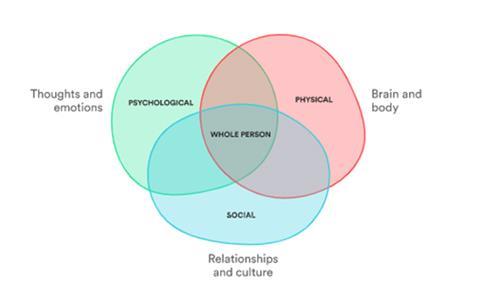
‘Anxiety’ and ‘optimism’ are the two overriding emotions people feel about returning to work after our lock down, according to our live poll. The webinar – hosted by our Head of Psychology, Dr Heather Bolton, and Mental Health Technology Specialist, Daisy Abbott – went on to explore how employers can ease some of that worry, and confirm that there really is a cause for optimism. Here are some of our highlights.
In search of certainty, let’s look at the numbers. Some 65% of adults with pre-existing mental health problems believe they have been exacerbated by lock down, according to Mind. Meanwhile, 80% of people working from home feel lock down has had a negative impact on their mental health, says Nuffield Health. Perhaps it’s little surprise, then, that we found 80% of organisations have experienced an increase in requests for mental health support since lock down.

While these findings paint a challenging picture of the state of mental health in the wake of the pandemic, the last few months have made one thing clear: we all have mental health all of the time. And it’s the product not only of psychological factors, but also physical and social ones too. Lock down has compromised all three.Our social connections have shifted – we’ve had to recast our reliance on friendship networks, withstand loneliness, and navigate changing family dynamics. Our physical health may have been impacted not just by a more sedentary lifestyle but also shifting eating, drinking, and sleeping habits; not to mention the underlying health risks of infection. On an emotional level, the lens through which we see the world might have been altered over the last few weeks, with the fragility of society becoming starkly apparent.
For employers, the immediate task at hand is to transition back to a new normal in a way that’s inclusive and supportive of the mental health of our entire work forces. During the webinar, we polled our audience to explore the key areas employers will be focussing on as we return to work. We’ll focus on the top two here: anticipatory anxiety and working relationships.
Anticipatory anxiety
As humans, we’re hardwired to respond negatively to uncertainty. In the absence of factual information, we fill in the blanks with our own – often negative – narratives. Rather than constructively solving the issue, this only perpetuates our worry and stress. As we anticipate the return to work, people will be generating their own narratives around what the newly regulated workplace will look like, how gruelling the commute will be, and how risky their days will become.
This is known as anticipatory anxiety. To help mitigate it, employers need to communicate effectively. With the government guidance still changing frequently, be honest about what you do and don’t know. Avoid speculation and aim to provide certainties where possible. For instance, let your workforce know that they definitely won’t be asked to rejoin the workplace before X date. And you’ll be able to provide more information when Y happens. This in itself provides an element of certainty. It means that people can begin to make plans in other areas of life, which ties back to the psycho-physical-social model above. So rather than over-promising or saturating them with information, contain anxiety by offering certainty where possible.
Work relationships
Throughout lock down – and the Zoom calls and Hangouts that have characterised our working life – many employees will have gained a new sense of intimacy. We’ve seen inside the houses of our teammates and gotten on first name terms with our manager’s children. On the flip side, where we have little overlap with other colleagues day-to-day work, we’ll have drifted apart. Some employees may have been furloughed while others remained working. Perhaps certain teams held the fort in the office while others maintained social distance at home. Some employees will be relaxed about the rules, while others are on red alert. These are all totally normal and understandable events – but they’re also possible areas of conflict within teams.
The first step is to acknowledge that new work relationship frictions are a possibility. Even the tightest of cultures aren’t immune to strains under such unlikely circumstances. The next step, as before, is clear communication. Where feasible, explain the logic behind difficult furlough decisions. Encourage teams to reconnect beyond the business as usual. For more Covid-specific areas of conflict – what are the health and safety regulations for your building, office or work environment? What hygiene protocols are you taking to stem the spread of the virus? What escalation policies can people turn to if they believe the rules are being flouted? Being as clear and transparent as possible will help people to feel comfortable about what’s expected of them, and what they can expect from the employee experience for the months to come.
To explore the full six steps to a mentally healthy transition, tune in on-demand video here
Alternatively, take a copy of our new handbook Back to Work: 6 steps to a mentally healthy transition.
Follow us on LinkedIn to stay up-to-date with our latest webinars and content.
For further support…
To find out more about managing workplace mental health with Unmind, get in touch following this link.
For further advice on managing individual well-being in the midst of corona-virus, read Mind’s latest guidance.












